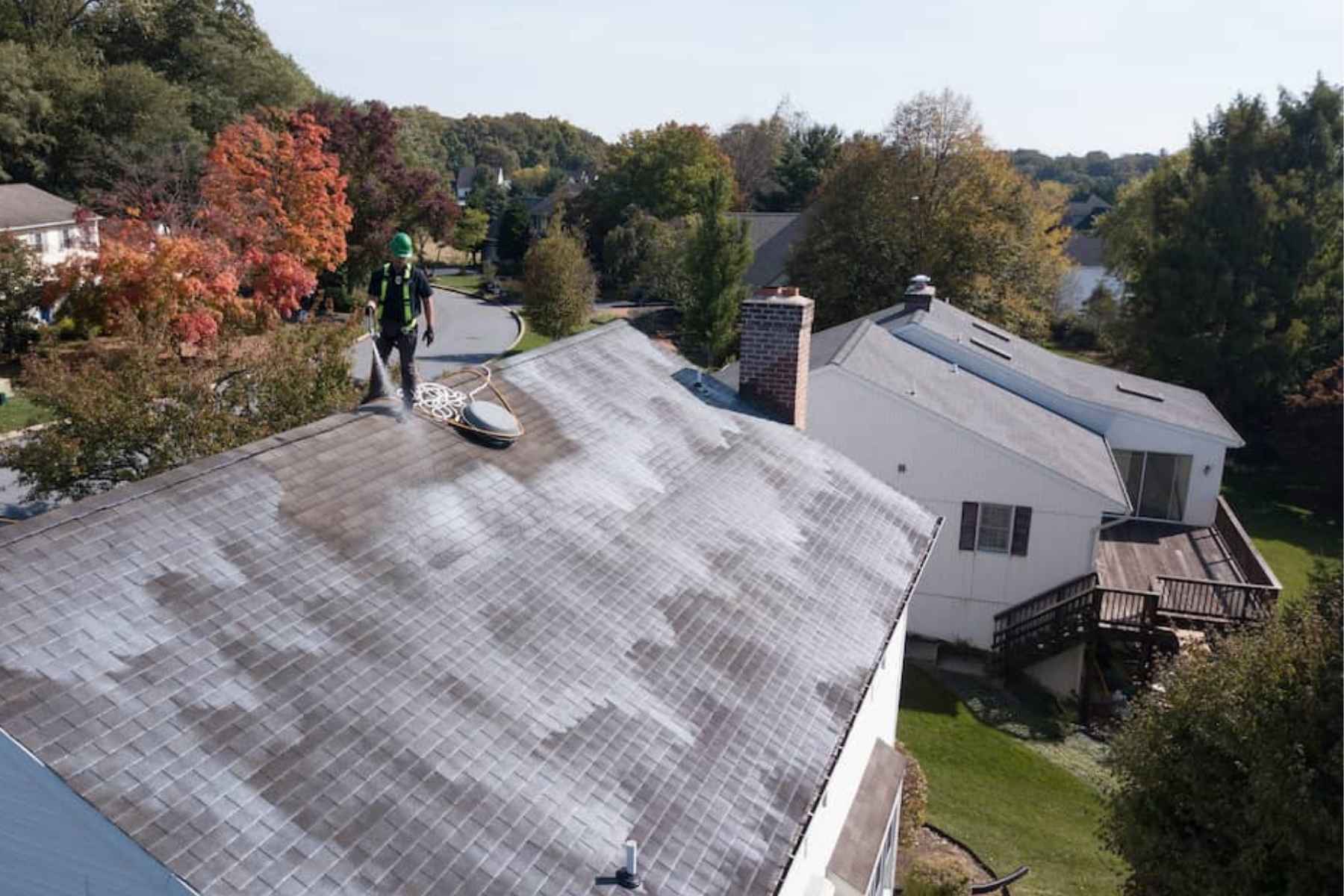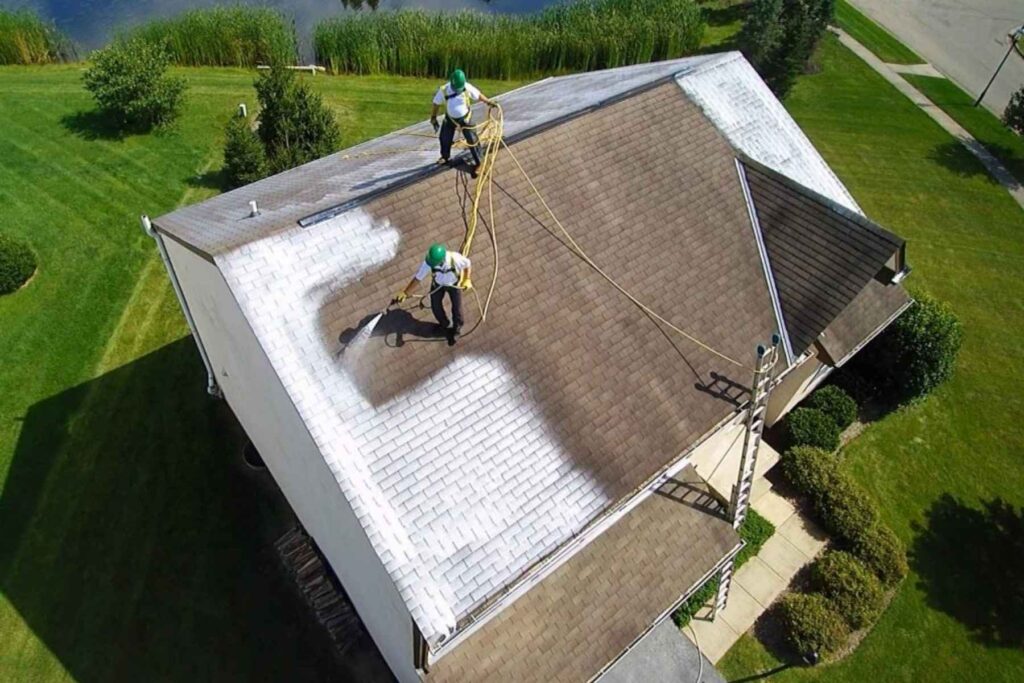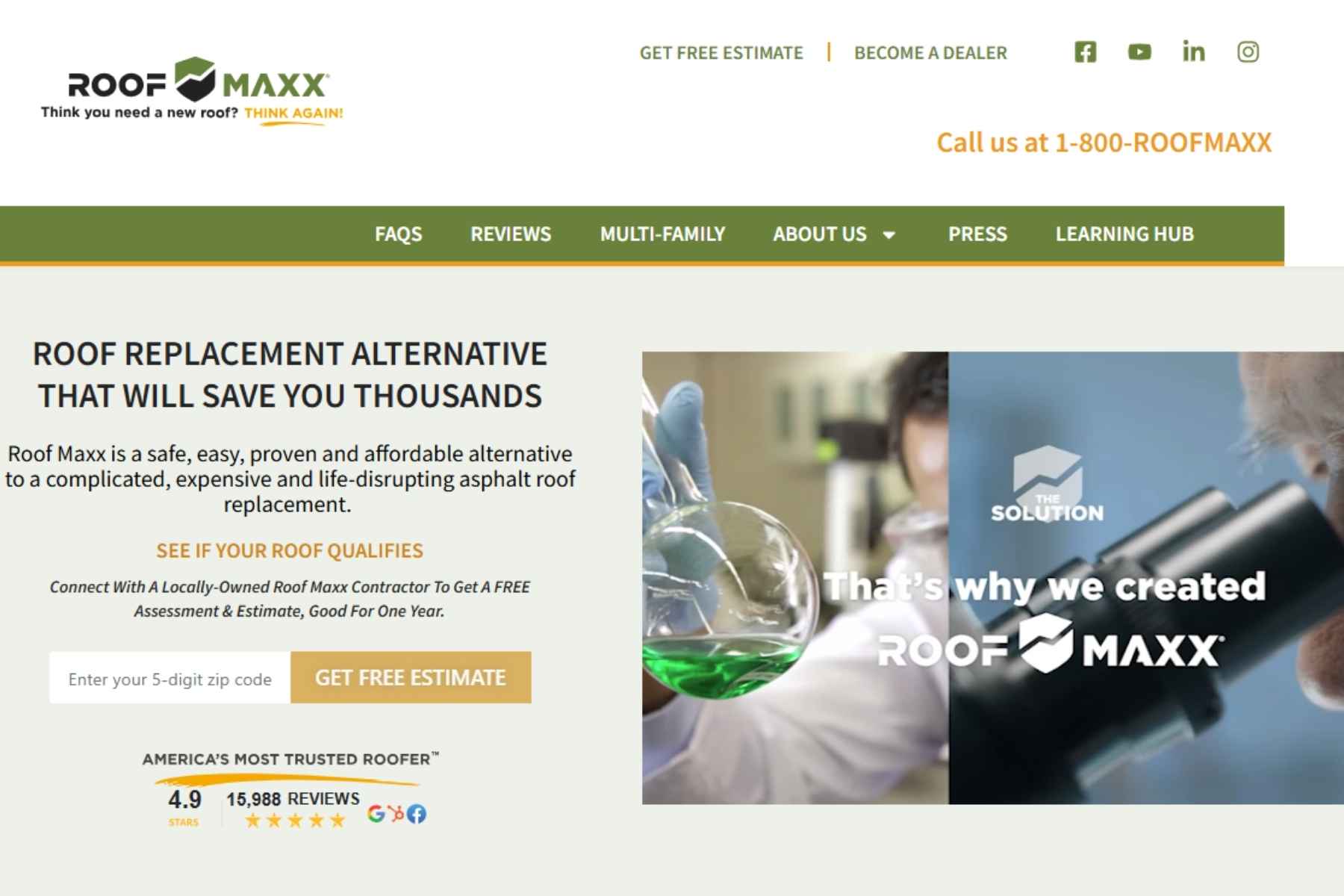Despite the treatment costing only 20% of a full roof replacement, Roof Maxx complaints continue to emerge. The savings make it an attractive option for homeowners facing expensive roofing decisions. While the soybean-based treatment promises to restore flexibility and waterproofing to aging asphalt shingles, customer experiences vary significantly.
In fact, some customers report successful results, with shingles regaining flexibility on applications covering homes up to 1,550 square feet. However, concerns persist about industry acceptance, with building departments and insurance companies showing hesitation toward the treatment.
This detailed review examines real customer experiences, effectiveness claims, and potential drawbacks of choosing Roof Maxx as a roofing solution. The past Roof Maxx lawsuit against Greener Shingles, which resulted in an $8 million judgment in Roof Maxx’s favor, highlights the controversies surrounding roof rejuvenation treatments.
Roof Maxx Complaints: What Customers Are Saying
Quality differences are at the forefront of Roof Maxx complaints across various review platforms. This is because independent contractors handle installations nationwide, leading to noticeable variations in service delivery. As a result, customers frequently point out issues such as uneven application coverage and inadequate pre-treatment cleaning procedures.
Common Roof Maxx complaints BBB and review sites
The Better Business Bureau (BBB) assigns Roof Maxx Technologies LLC a B- rating, primarily due to unresolved customer complaints. Additionally, several franchise locations lack BBB accreditation. Customer concerns often center around warranty limitations and service consistency.
Quality control emerges as a primary issue, with reports indicating:
- Varying contractor expertise levels
- Installation timing problems
- Weather-related application concerns
Analyzing the validity of negative reviews
Upon closer examination, many Roof Maxx complaints stem from misunderstandings about the product’s purpose. The treatment specifically aims to restore shingle flexibility rather than fix existing leaks or structural issues. Furthermore, some negative reviews come from individuals who haven’t personally used the product.
Insurance-related concerns present another notable challenge. Several property owners report that insurance carriers remain skeptical about the treatment’s long-term effectiveness. Moreover, some companies continue using satellite imagery to evaluate roof conditions, potentially canceling policies on older roofs regardless of Roof Maxx application.
Positive experiences that counter the complaints
Numerous homeowners report successful outcomes with Roof Maxx treatments. One customer documented their 23-year-old roof’s transformation, noting that previously brittle shingles became notably flexible after application. The treatment proved particularly effective for roofs showing early signs of aging but without structural damage.
Professional evaluations suggest that Roof Maxx performs best when applied during specific timeframes:
- Early intervention (5-10 years into roof life)
- Regular maintenance schedule
- Proper pre-treatment assessment
The Ohio State University conducted testing confirming that the treatment maintains fire safety standards and doesn’t increase flame spread risks. Additionally, the product earned recognition as a USDA BioPreferred solution, addressing environmental concerns.
Financial considerations often influence customer satisfaction. The Roof Maxx treatment typically costs between $1,500 and $2,500, depending on roof size and condition. When compared to complete roof replacement, this represents substantial savings, particularly for homeowners facing immediate roofing decisions.
Maintenance professionals emphasize that success rates improve substantially when property owners maintain realistic expectations. The treatment works effectively for preserving shingle flexibility but cannot address underlying structural issues or replace necessary repairs. Regular roof inspections and proper maintenance remain essential components of the overall roofing system’s longevity.
The Science Behind Roof Maxx: Does It Actually Work?

Laboratory testing provides compelling evidence of Roof Maxx’s effectiveness in extending the life of asphalt shingles. For instance, The Ohio State University conducted extensive research on 17-year-old shingles, carefully examining multiple performance aspects.
How the soy-based treatment claims to rejuvenate shingles
The treatment primarily utilizes soy methyl ester, earning an 86% biobased content certification. Moreover, through Soy-Fusion technology, millions of microbeads penetrate brittle asphalt shingles within just 30 minutes of application.
The formula operates by:
- Replacing depleted petrochemical oils in the asphalt core
- Restoring original shingle flexibility
- Enhancing waterproofing capabilities
- Creating a protective barrier against UV damage
Expert analysis of the technology
Scientific evaluation demonstrates substantial improvements in treated shingles. The Ohio State University study documented several key findings:
The treatment improved permeability by approximately 60%, bringing aging shingles closer to new shingle performance levels. Subsequently, granule adhesion reached levels similar to those of new shingles. After application, hail impact testing showed a 24% decrease in depression size.
PRI Construction Materials Technology, a primary ASTM testing facility, confirmed that treated shingles:
- Returned to new-like properties
- Passed flame spread tests without increased fire risks
- Demonstrated enhanced wind resistance
Real-world performance vs. laboratory claims
Field testing closely aligns with laboratory results. Additionally, independent contractors report noticeable improvements in shingle flexibility within 72 hours of treatment. Furthermore, the soy-based formula remains effective in temperatures above 36 degrees Fahrenheit.
Battelle Laboratories, alongside the Ohio Soybean Council, developed this innovative treatment using soy methyl ester-based water emulsion. The formula earned recognition on the EPA’s Safer Chemical Ingredients List with a full-green circle designation.
Recent roof maxx complaints concerning performance often stem from application timing. The treatment shows optimal results when applied to roofs between 5-10 years old. Although some roof maxx reviews complaints mention inconsistent results, laboratory data indicates one application adds five years to roof life.
The treatment’s effectiveness extends beyond simple surface coating. Testing confirms deep penetration into the asphalt core, addressing fundamental aging issues rather than merely coating the surface. Roof maxx reviews consumer reports complaints occasionally question long-term durability, yet multiple applications can extend roof life up to 15 years.
Concerning roof maxx complaints bbb entries, many focus on application procedures rather than product effectiveness. The treatment requires proper surface preparation and specific application conditions for optimal results. Roof maxx complaints florida often relate to weather conditions during application, though the formula penetrates shingles within 30 minutes, minimizing rain wash-off concerns.
Independent studies validate that treated shingles maintain fire safety standards, addressing a common concern among property owners. The treatment’s natural fungicidal properties also help inhibit moss and algae growth, offering additional benefits beyond basic shingle restoration.
Roof Maxx Cost Analysis: Is It Worth The Investment?
Financial considerations drive many roof maxx complaints as property owners weigh treatment costs against potential benefits. A detailed analysis of pricing structures and long-term value reveals crucial insights for homeowners considering this roofing solution.
Average cost of Roof Maxx application in 2025
Current pricing for Roof Maxx treatments varies based on roof dimensions and local market conditions. For a standard 2,000-square-foot home, application costs typically range between $3,000 and $6,000. The cost per square foot generally falls between $0.75 and $1.25.
Several factors influence the final price:
- Roof size and complexity
- Pre-treatment repairs or preparations
- Local dealer pricing variations
- Additional services like gutter cleaning
Cost comparison: Roof Maxx vs. roof replacement
Traditional roof replacement expenses continue climbing steadily. Most roofs in the United States now require $20,000 to $30,000 for complete replacement. Roof maxx reviews consumer reports complaints often mention initial sticker shock, yet the treatment typically costs just 15-20% of full replacement expenses.
Consider these comparative figures:
- A $12,000 roof replacement alternative costs approximately $2,500 with Roof Maxx
- Labor comprises 60% of replacement costs versus minimal labor for treatment
- Standard replacement ranges from $5,352 to $10,830 nationwide
The treatment offers substantial savings through:
- Reduced material costs
- Minimal labor requirements
- Quick application process
- Extended roof lifespan
Hidden costs customers don’t expect
Beyond the base application price, roof maxx complaints bbb entries highlight several unexpected expenses. Additional costs surface through necessary pre-treatment repairs, ensuring optimal roof condition before application.
Some dealers charge separately for:
- Initial roof inspections
- Minor repairs or preparations
- Gutter cleaning services
- Additional treatment areas
Insurance considerations present another financial factor. Roof maxx complaints florida sometimes center around coverage issues. Nevertheless, certain homeowners successfully secure insurance coverage for treated roofs, depending on individual circumstances.
The treatment includes a 5-year flexibility warranty, essentially guaranteeing shingle performance. Still, this warranty excludes:
- Leak protection
- Installation defects
- Storm damage coverage
Looking toward long-term value, multiple applications become necessary. The treatment requires reapplication every five years, creating recurring costs. Nonetheless, even with repeated treatments, total expenses remain significantly below replacement costs.
For property owners seeking cost-effective solutions, understanding these financial aspects proves essential. The initial Roof Maxx cost represents approximately 20% of traditional replacement expenses, offering substantial immediate savings. Furthermore, the treatment extends roof life by up to 15 years with proper maintenance and reapplication, presenting a compelling financial case despite occasional roof maxx reviews complaints about ongoing maintenance requirements.
Warranty and Insurance Issues With Roof Maxx

Warranty coverage emerges as a critical consideration for property owners exploring Roof Maxx treatments. The company’s five-year flexibility warranty presents specific limitations and conditions that warrant careful examination.
Roof Maxx’s warranty limitations
The standard Roof Maxx warranty guarantees shingle flexibility for five years from the treatment date. This coverage remains valid even if the manufacturer’s original warranty becomes void. Yet, several exclusions exist:
- Protection against leaks from faulty installation
- Damage from extreme weather conditions
- Acts of nature requiring insurance claims
- Installation errors or misuse
Under normal circumstances, if treated shingles lose their operating flexibility, certified dealers provide retreatment of affected areas on a prorated basis throughout the 60-month warranty period.
How insurance companies view treated roofs
Insurance providers typically maintain a neutral stance toward Roof Maxx applications. The treatment doesn’t void common homeowner insurance policies since it preserves roof integrity without altering structural components.
Several insurance-related benefits surface:
- Potential assistance in securing coverage for aging roofs
- Possible premium reductions through proactive maintenance
- Reduced likelihood of claims, helping maintain lower rates
Yet, individual experiences vary significantly. Some homeowners report that insurance carriers remain skeptical about treated roofs. Certain companies continue evaluating properties through satellite imagery, potentially canceling policies on older roofs regardless of treatment status.
Roof Maxx complaints related to warranty claims
Roof maxx complaints bbb entries frequently highlight warranty-related concerns. Primary issues include:
- Limited scope of coverage compared to traditional roof warranties
- Prorated nature of the five-year protection plan
- Documentation requirements for valid claims
- Exclusion of structural issues and weather damage
The warranty’s transferability offers a potential advantage for property sellers. Nevertheless, roof maxx reviews complaints often mention challenges in warranty claim processes. The treatment’s effectiveness must be documented through specific testing procedures to validate warranty claims.
For optimal protection, property owners should maintain complete documentation:
- Pre-treatment roof condition assessments
- Application dates and procedures
- Regular maintenance records
- Any post-treatment issues or concerns
Standard roofing warranties typically cover materials and installation for varying periods, protecting against leaks and property damage related to human error. In contrast, Roof Maxx’s warranty focuses specifically on shingle flexibility rather than comprehensive protection.
The cost implications of warranty limitations become significant when considering that weather-related damage, excluded from coverage, can result in repairs costing up to $12,000. Therefore, maintaining adequate insurance coverage alongside the Roof Maxx warranty proves essential for complete protection.
Alternative Solutions to Consider
Homeowners exploring alternatives to Roof Maxx treatments have several viable options for extending roof life. As roof maxx complaints continue surfacing, understanding these alternatives becomes increasingly important for informed decision-making.
Traditional roof replacement options
Full roof replacement remains a comprehensive solution, costing between $5,000 and $10,000 for standard installations. Labor expenses constitute 60% of total replacement costs. Southern cities like Austin average $7,000, whereas Western locations such as Denver typically exceed $9,000.
Spring and fall present ideal timing for replacements, yet installations proceed year-round given proper weather conditions. Complete replacements offer distinct advantages:
- Fresh start with new materials
- Opportunity to address structural issues
- Extended warranty protection
- Color customization options
Copper strip technology as a competing solution
Copper strip installations present an innovative approach to roof preservation. These strips utilize 99.96% pure antimicrobial copper, effectively preventing algae and mold growth through natural oxidation. The technology works through:
- Release of copper ions during rainfall
- Natural fungicidal properties
- Protection against moss and lichens
Installation requires precise positioning just below the ridge line for optimal water flow distribution. This placement ensures maximum effectiveness as copper ions spread across the roof surface during precipitation events.
Other spray roof coating products on the market
Amid rising roof maxx complaints bbb reports, several coating alternatives demonstrate promising results. Acrylic coatings stand out for their durability and cost-effectiveness, offering superior UV resistance. These solutions typically cost 50-70% less than full replacements.
Modern coating technologies include:
- Silicone-based solutions – Excellent for water resistance
- Polyurethane coatings – Superior impact resistance
- Butyl coatings – Fast-drying with high reflectivity
Recent advancements show coatings can extend roof life by 10-20 years. Properly maintained systems often allow multiple recoatings, substantially reducing long-term expenses. Furthermore, white roof coatings reflect 80-90% of UV rays, potentially decreasing cooling costs by 20%.
Considering environmental impact, coating applications generate minimal waste. Traditional replacements contribute approximately 11 million tons of shingle waste to landfills annually. Consequently, many property owners facing roof maxx reviews complaints explore these eco-friendly alternatives.
Professional evaluations indicate coating success depends largely on proper application timing and surface preparation. Key factors include:
- Climate conditions
- Roof material compatibility
- Budget constraints
- Expected lifespan requirements
Importantly, certain situations necessitate replacement over coating solutions. Extensive damage or excessive wet insulation typically demands complete renewal. Thus, thorough professional assessment helps determine optimal treatment approaches based on individual roof conditions.
Roof Maxx Complaints Frequently Asked Questions
Are there any Roof Maxx complaints Florida?
Roof Maxx, a company offering roof rejuvenation services, has received mixed feedback in Florida. The Better Business Bureau (BBB) profile for Roofmax Corp in Jacksonville, Florida, indicates a C+ rating due to a pattern of complaints.
How effective is Roof Maxx in extending the life of asphalt shingles?
Roof Maxx can potentially extend the life of asphalt shingles by 5 years per application, with up to three applications possible. The soy-based treatment aims to restore flexibility and waterproofing to aging shingles, but its effectiveness may vary depending on the roof’s condition and age.
What is the average cost of a Roof Maxx treatment?
The cost of a Roof Maxx treatment typically ranges from $1,500 to $2,500, depending on the roof size and condition. This represents about 15-20% of the cost of a full roof replacement, making it an attractive option for many homeowners.
Does Roof Maxx void existing roof warranties?
Roof Maxx treatments may affect existing manufacturer warranties on shingles. It’s important to check with your shingle manufacturer and review your current warranty before applying Roof Maxx, as it could potentially impact coverage.
How does Roof Maxx compare to traditional roof replacement?
Roof Maxx is a less expensive alternative to full roof replacement, costing about 20% of a new roof. However, it doesn’t address structural issues or replace damaged shingles. It’s best suited for roofs showing early signs of aging but without significant damage.
What are the limitations of Roof Maxx’s warranty?
Roof Maxx offers a 5-year flexibility warranty, which guarantees shingle flexibility but doesn’t cover leaks, installation defects, or storm damage. The warranty is prorated and has specific conditions, so it’s important to understand its limitations before opting for the treatment.
Are there any side effects of using Roof Maxx on shingles?
While Roof Maxx is designed to restore flexibility, some homeowners have reported temporary darkening of shingles or an oily residue after application. However, these effects typically fade within a few weeks.
Does Roof Maxx work on all types of roofs?
No, Roof Maxx is specifically formulated for asphalt shingle roofs. It is not suitable for metal, tile, or slate roofs, and it may not be effective if shingles are already too brittle or severely damaged.
How long does it take for Roof Maxx to show results?
Most users notice improvements in shingle flexibility and waterproofing within 24 to 72 hours. However, the full benefits, such as extended lifespan and durability, become more apparent over time.
Can Roof Maxx cause leaks or damage my roof?
Roof Maxx itself does not cause leaks, but if applied to an already failing roof with structural issues, it may not prevent further deterioration. A professional inspection is recommended before application.
Is Roof Maxx environmentally friendly?
Yes, Roof Maxx is a soy-based, plant-derived treatment that is non-toxic and safe for people, pets, and the environment. However, some homeowners have raised concerns about potential runoff staining driveways or walkways.
